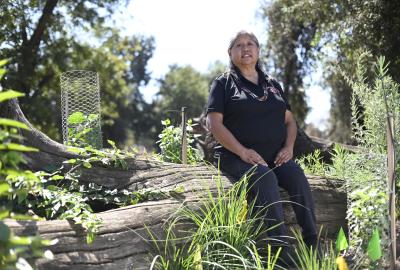This former steel town is winning at clean energy
The score was 69-0. But that was nothing new.
The Steamrollers of Steelton-Highspire, the school district serving the small industrial suburbs just southeast of Harrisburg, Pennsylvania, had won the last two football state championships. This win, however, marked the start of something new. When the students returned to school the following Monday to celebrate their team’s victory, they rolled up in brand new electric buses, yellow as a sunrise — what Superintendent Dr. Mick Iskric calls “the Cadillac of school buses.”

Steelton-Highspire runs six of the first electric school buses in the state, thanks to a $2.37 million rebate through the Biden administration’s Bipartisan Infrastructure Law, adding to their own $90,000 investment.

The new buses mean no more diesel fumes — and no diesel fuel, which will save the district at least $20,000 a year.
It also means no fossil fuels, the batteries are charged solely by an on-site solar array that powers all the district buildings. That’s very new. As far as Iskric knows, Steelton-Highspire is the only district in Pennsylvania running on 100 percent clean energy and transportation.
Across the U.S., schools have been rolling out thousands of new low- and zero-emissions buses in more than 1,300 districts, drawing on $3 billion from the Environmental Protection Agency’s Clean School Bus Program. The program is expected to distribute another $2 billion over the next two years, helping schools transition away from older, louder, diesel-chugging buses.
A new industry for an old steel town
The Steelton area ranks worst in the state when it comes to childhood asthma, preterm birth and disaster-related deaths, according to Environmental Defense Fund’s U.S. Climate Vulnerability Index. It’s in the 99th percentile nationally for facilities that generate or burn hazardous waste. Ninety-six percent of the 1,371 students in the elementary, middle and high schools are on free and reduced lunch program.
It wasn’t always this way. After the Civil War, the Pennsylvania Steel Company chose this land, close to a railroad and the Susquehanna River, to build the first steel mill in the U.S. Almost 20 percent of the Golden Gate Bridge was fabricated here. Through the Great Depression, labor disputes and both world wars, Steelton kept plugging away, even as its population declined.
In 1972, Hurricane Agnes arrived. The Harrisburg Patriot News warned of flooding — then went dark for six days, their printing presses underwater. So was the mill. “[Agnes] wiped out the entire west side of Steelton, about 2,000 homes,” Iskric said.
All the debris left behind by the storm was dumped behind the high school, and it eventually became a working landfill. Then Bethlehem Steel, which had owned the company since 1917, went under in the ‘90s. “We were never able to truly recover,” he said.
Iskric grew up a block away from the school playing sports with generations of his immediate and extended family. The three top administrators in the district are from here, too. Leading the way in a town that had always built things, they knew they had to get creative.
The dump — an unsightly, unhealthy brownfield — couldn’t be redeveloped, but it could be something.
So the district partnered with McClure, an energy services company, to build a solar array on the 5-acre dump site — 1.7 megawatts, more than a thousand panels. It will save the district at least $3.6 million over the course of the next 20 years, a major financial boost for area schools.
Environmental news that matters, straight to your inbox
Electric buses bring clean air, new hope
Typically, the infrastructure near a playground in Steelton-Highspire is last century’s — sooty, corroded smokestacks, tanks and pipes hissing the word “sick.”
But now kids see solar panels that shine. In the same way that access to parks and trails and trees can improve students’ development and academic performance, it stands to reason that proximity to clean energy infrastructure might help, too.
“The majority of young people around the world are feeling that governments aren’t acting enough, and it’s harming their mental health,” said Elizabeth Bechard, senior policy analyst with Moms Clean Air Force, an advocacy group that’s encouraging schools to replace diesel buses. “When you have infrastructure like solar panels and electric buses, that’s visual evidence of government and collective action. There’s research showing that when people see other people taking climate action, it can help generate feelings of hope.”

Iskric said Steelton-Highspire is nowhere close to being done taking action. A food desert, the district has a greenhouse that provides fresh vegetables. They have also partnered with Penn State Health to study the ways the new electric buses impact their air quality.
And they’re exploring a community solar program so families in the district can take advantage of the solar array to save money on their own electricity bills.
“Our families have been beaten down. When you come from a background of 95% poverty, you’re just waiting for people to give up on you,” Iskric said. “What’s best for the kids? If you think about that in everyday life, whatever side of the aisle you’re on, it’ll allow you to take chances, because it’s not about you. It’s not about me. It’s about the kids. It’s about the future.”


